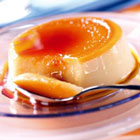This quiche is brilliant. I was looking for something that would enable me not to use flour, and in this dish, the grated potatoes do a great job. It’s full of wonderful seasonal spring greens, and you’re welcome to substitute them for whatever greens you like – except bok choy. I have a feeling bok choy won’t work so well in this dish.
Green Quiche
3 large or 5 smallish potatoes
150 gr feta cheese
150 gr spicy yellow cheese (it’s possible to substitute for feta, though two kinds of cheese make it really nice and interesting)
3 large cups of chopped greens: white beet leaves, kohlrabi leaves, broccoli leaves and stems, kale, collard, anything you have at home
2 white parts of leek, chopped in rings
2 eggs
2 garlic cloves
This recipe is much easier to do in a food processor, but is doable by hand, as well.
Heat up oven to 180 degrees celsius.
Grate the potatoes (I don’t bother skinning them), and mix them with the cheeses, eggs and garlic.
Some separate the thicker stems from greens when cooking them; I think this can easily be avoided by simply chopping the stems smaller, since the quiche will be cooking for a long time anyway. Chop up greens, and add, with leeks, to the mix. Mix well. If it’s still too liquid, add some more greens or another small potato. If too dry, add a little bit of cheese. You’ll feel if it’s the right consistency if it doesn’t move too much and seems packed with solids.
Bake for about 45 minutes, or until a fork sunk in the middle comes out dry. It’ll be a little airy when right out of the oven, but it becomes more solid as it rests outside after it’s baked.

